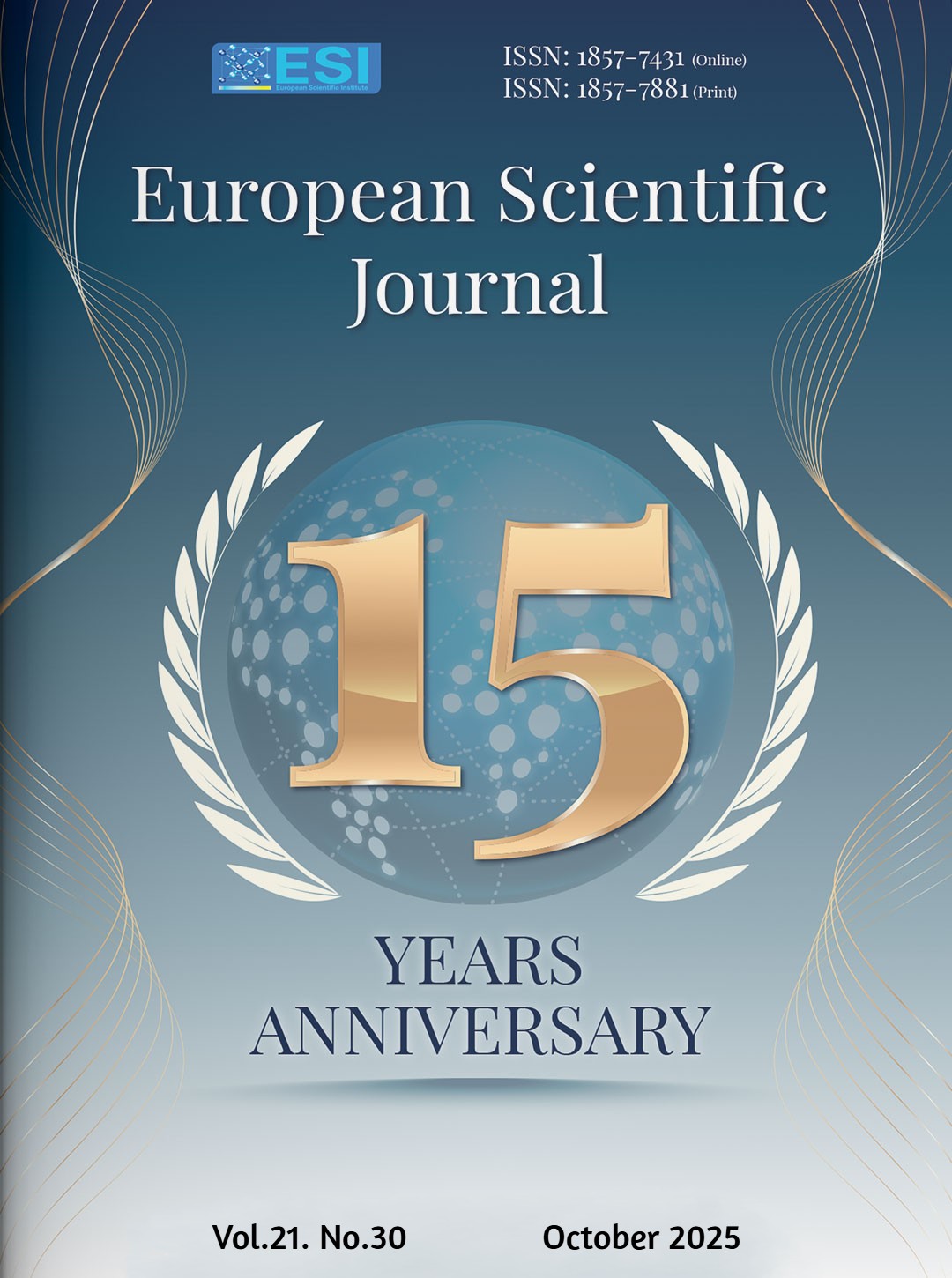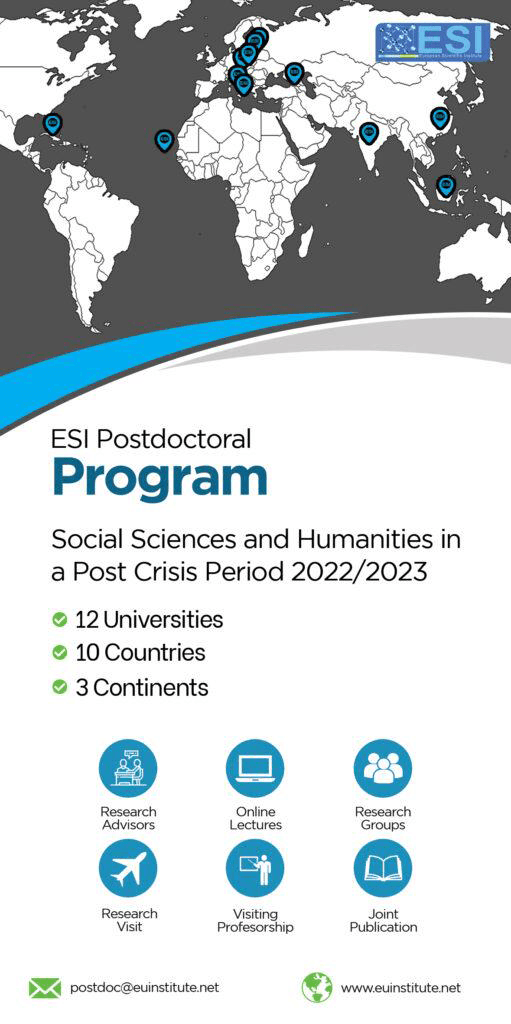Typologie des exploitations rizicoles de Bunkeya Sud-Est de la RDC : approche par classification ascendante hiérarchique
Abstract
L’étude menée à Bunkeya, cité rurale du territoire de Lubudi, province de Lualaba, en RDC. Elle visait la caractérisation de la diversité des systèmes rizicoles et à identifier les facteurs expliquant leur hétérogénéité. Cette zone offre des conditions naturelles favorables à l’agriculture. Une approche méthodologique mixte a été adoptée, combinant analyse en composantes principales (ACP), classification ascendante hiérarchique (CAH) et régression logistique. L’ACP a mis en évidence l’ancienneté dans la riziculture, la superficie cultivée, l’accès aux intrants et les revenus agricoles comme principaux facteurs de différenciation. Trois types d’exploitations ont été identifiés : un groupe de subsistance à faibles intrants, un groupe intermédiaire, et un groupe performant, mieux organisé et plus rentable. L’analyse des facteurs explicatifs a révélé quatre variables déterminantes : le niveau d’instruction, l’ancienneté dans l’activité, le système cultural utilisé, et l’accès au crédit, ce dernier jouant un rôle clé dans l’intensification des systèmes agricoles.
The study was conducted in Bunkeya, a rural town in the Lubudi territory, Lualaba province, in the Democratic Republic of Congo (DRC). It aimed to characterize the diversity of rice-farming systems and to identify the factors explaining their heterogeneity. This area offers natural conditions favorable to agriculture. A mixed methodological approach was adopted, combining Principal Component Analysis (PCA), Hierarchical Ascendant Classification (HAC), and logistic regression. The PCA highlighted seniority in rice cultivation, cultivated area, access to inputs, and agricultural income as the main factors of differentiation. Three types of farms were identified: a subsistence group with low input use, an intermediate group, and a high-performing group that is better organized and more profitable. The analysis of explanatory factors revealed four key variables: the level of education, years of experience in rice farming, the production system used, and access to credit, the latter playing a decisive role in the intensification of agricultural systems.
Downloads
Metrics
PlumX Statistics
References
2. Bolakonga Antoine Bily Ilye., Jules Nkulu Mwine Fyama., Mushakulwa Waziri and Gregor Jaecke (2017). filieres agricoles en republique democratique du congo : maïs, riz, bananes plantains et pêche, Fondation Konrad Adenauer Kinshasa, Octobre 2017
3. Chan – Eun Park., Yun – Sook Kim., Kee – Jai Park., and Bum – Keun Kim. (2011). Changes in physicochemical characteristics of rice during storage at different temperatures. J. Stored Prod. Res., vol. 48, pp. 25–29, Jan. 2012, doi: 10.1016/j.jspr.2011.08.005
4. Coulibaly Aïssatou, Kouakoua Yapi Elisée, Amani N’Guessan Georges. (2021). Caractéristiques Physico-Chimiques et Organoleptiques de Certaines Variétés de Riz Local Cultivées en Côte d’Ivoire. International Journal of Progressive Sciences and Technologies (IJPSAT) ISSN: 2509-0119. Vol. 29 No. 1 October 2021, pp.668-674
5. Diagne Aliou., Adekambi Souleimane Adeyemi., Simtowe Franklin., Biaou Gauthier. (2013). Explaining the Adoption of Nerica Rice Varieties in West Africa. Journal of Agricultural Economics, 64(1), 17–39.
6. Dugué Pierre., Giger Michel., Landais Eric. (2004). Méthodes de diagnostic agraire : construction de typologies d’exploitations agricoles. Cahiers Agricultures, 13(1), 1–9
7. Farre Ignacio., Facchi, Andrea., O’Connell Michael., Park Gwynn. (2007). Benchmarking water productivity in rice-based cropping systems in Australia. Agricultural Water Management, 93(3), 282–292.
8. Faye Idrissa., Seck Papa Abdoulaye., Diagne Aliou. (2014). Varietal diffusion and productivity of rice in Senegal. Food Policy, 44, 181–192.
9. Gomes Elian., Alves Edson., Castro Ademir. (2021). Production systems and yield gaps in Brazilian rice farming: a typology based on socioeconomic and technical variables. Agronomy, 11(2), 289.
10. Ibrahima Mbodj, Mouhameth Camara., Omar Ndaw Faye., Fallou Sarr., Gloria Keny. (2019). Caractérisation physico-chimique de quinze (15) variétés de riz (Oryza sativa L.) produites dans la vallée du fleuve Sénégal. Afrique SCIENCE 15(3) (2019) 222 - 233ISSN 1813-548X, http://www.afriquescience.net.
11. Jules Nkulu Mwine Fyama. (2010). Dynamique agraire des exploitations agricoles familiales dans l’hinterland minier du Katanga et perspectives pour une politique d’appui. Thèse de doctorat en sciences agronomiques, Inédite, Université de Lubumbashi (RD Congo)
12. Kasongo Emery Mukonzo. (2009). Système d’évaluation des terres à multiples échelles pour la détermination de l’impact de la gestion agricole sur la sécurité alimentaire au Katanga, R.D. Congo, Thèse de doctorat en science, Université de GANT (Belgique).
13. Kperim Tabone., Koffi – Tessio., and Diagne Aliou. (2010). Compétitivité de la filière riz local au Togo : Une évaluation du taux de protection nominale, effective et du coût en ressource domestique. African Association of Agricultural Economists (AAAE), 19-23, 2010,
14. Landais Eric. (1998). Modelling farm diversity: new approaches to typology building in France. Agricultural Systems, 58(4), 505–527.
15. Philippe Lebailly., Sossou Comlan. (2004). Typologie des exploitations agricoles en Afrique centrale : méthodes et applications. Cahiers Agricultures, 13(1), 1–9.
16. Louis André., Christian mestres., Jacques Faure (1991). Measurement of endosperm vitreousness of corn: a quantitative method and its application to African cultivars. Cereal Chemistry, 68 (6) 614 – 617
17. Lucien Nkulu Masengo., Tshomba Kalumbu John., Jules Nkulu Mwine Fyama and Moïse Kalambaie Bimn. (2025). Circuits d’approvisionnement et facteurs compétitifs : Une évaluation économique des variétés de riz dans les marchés de l’arc cuprifère du Katanga. International Journal of Multidisciplinary and Current Research Research ISSN: 2321-3124. Vol.13 (Jan/Feb 2025).
18. Demont Matty., Ndour Maimouna, and Esperance. Zossou. (2013). Can local African rice be competitive? An analysis of quality-based competitiveness through experimental auctions, Cahier Agriculture, vol. 22, no. 5, pp. 345–352, Sep. 2013, doi: 10.1684/agr.2013.0664
19. Michel Baudouin, Lebailly Philippe, Mpanzu Balomba Patience, Jules Nkulu Mwine Fyama, Bonkena Papy, Furaha Mirindi Germaine, Akalakou Claude, Bolakonga Ilye, Bily. (2019). Etude de l’analyse de la compétitivité du riz local et des options de son amélioration. Open Repository and Bibliography – Liege. AGRER – EARTH
20. Moura Ana Carolina., Fialho Fabio., Pereira Joao Guilherme. (2019). Typology of irrigated rice producers in Southern Brazil. Revista de Economia Sociologia Rural, 57(1), 11–28.
21. Pandey Sushil., Byerlee Derek., Dawe David., Dobermann Achim., Mohanty Samarendu., Rozelle Scott., Hardy Bill. (2010). Rice in the Global Economy: Strategic Research and Policy Issues for Food Security. International Rice Research Institute.
22. Pannell, D. J., Llewellyn, R. S., & Corbeels, M. (2010). The farm-level economics of conservation agriculture for resource-poor farmers. Agriculture, Ecosystems & Environment, 187(1), 52–64.
23. Silva, J. F., de Souza Filho, H. M., & do Amaral, D. M. (2015). Sistema de produção e desempenho econômico de unidades de produção de arroz irrigado no Sul do Brasil. Revista de Economia e Sociologia Rural, 53(2), 283–298.
24. Thangavelu Subiksha Rathna Priya., Anthony Richard Leo Eliazer., Kandasamy. Ravichandran, and Uthayasankar Antony. (2019). Nutritional and functional properties of coloured rice varieties of South India: a review. J. Ethn. Foods, vol. 6, no. 1, pp. 1–11, Oct. 2019, doi: 10.1186/s42779-019-0017-3.
25. Tittonell Pablo., Muriuki Alex., Shepherd Keith., Mugendi Dominic., Kaizzi Christopher., Okeyo Jeremiah., Verchot Louis., Coe Robert., Vanlauwe Bernard. (2010). The diversity of rural livelihoods and their influence on soil fertility in agricultural systems of East Africa – A typology of smallholder farms. Agricultural Systems, 103(2), 83–97.
26. Tittonell Pablo., Giller Kenneth. (2013). When yield gaps are poverty traps: The paradigm of ecological intensification in smallholder agriculture. Field Crops Research, 143, 76–90.
27. Tshomba Kalumbu John, Jean Helène Kitsali., Jules Nkulu Mwine Fyama Moïse Kalambaie Bin Mukanya. (2022). Analyse des facteurs de compétitivité dans la production du maïs entre la RDC et la Zambie en Afrique australe. International Journal of Multidisciplinary and Current Research, 10(03).
28. Tshomba Kalumbu John, Nkulu Mwiné Fyama Jule et Kalambaie Binm Mukanya Madiya Moïse. (2020). Analyse de la dépendance alimentaire aux importations des ménages dans trois communes de la ville de Lubumbashi, RDC. International Journal of Multidisciplinary and Current Research Research ISSN : 2321-3124.
29. Joe Ward (1963). Hierarchical grouping to optimize an objective function. Journal of the American Statistical Association, 58(301), 236–244.
30. Whitbread Anthony., Robertson Michael., Carberry Peter., Dimes John. (2010). How farming systems simulation can aid the development of more sustainable smallholder farming systems in southern Africa. European Journal of Agronomy, 32(1), 51–58.
31. Wopereis Marco., Johnson David., Ahmadi Nourollah., Tollens Eric., Jalloh Abdulai. (2013). Realizing Africa’s Rice Promise Wallingford: CAB International.
32. Zhimin Wang., Mingwei Zhang., Guang Liu., Yuanyuan Deng., Yan Zhang., Xiaojun Tang., Ping Li., Zhencheng Wei. (2021). Effect of the degree of milling on the physicochemical properties, pasting properties and in vitro digestibility of Simiao rice. Grain Oil Sci. Technol., vol. 4, no. 2, pp. 45–53, Jun. 2021, doi: 10.1016/j.gaost.2021.04.002.
Copyright (c) 2025 Lucien Nkulu Masengo, Chris Kamwanya Kipanga, Sabin Mulang Tshinish, John Tshomba Kalumbu, Jules Nkulu Mwine Fyama, Moïse Kalambaie Bimn Mukanya

This work is licensed under a Creative Commons Attribution 4.0 International License.








